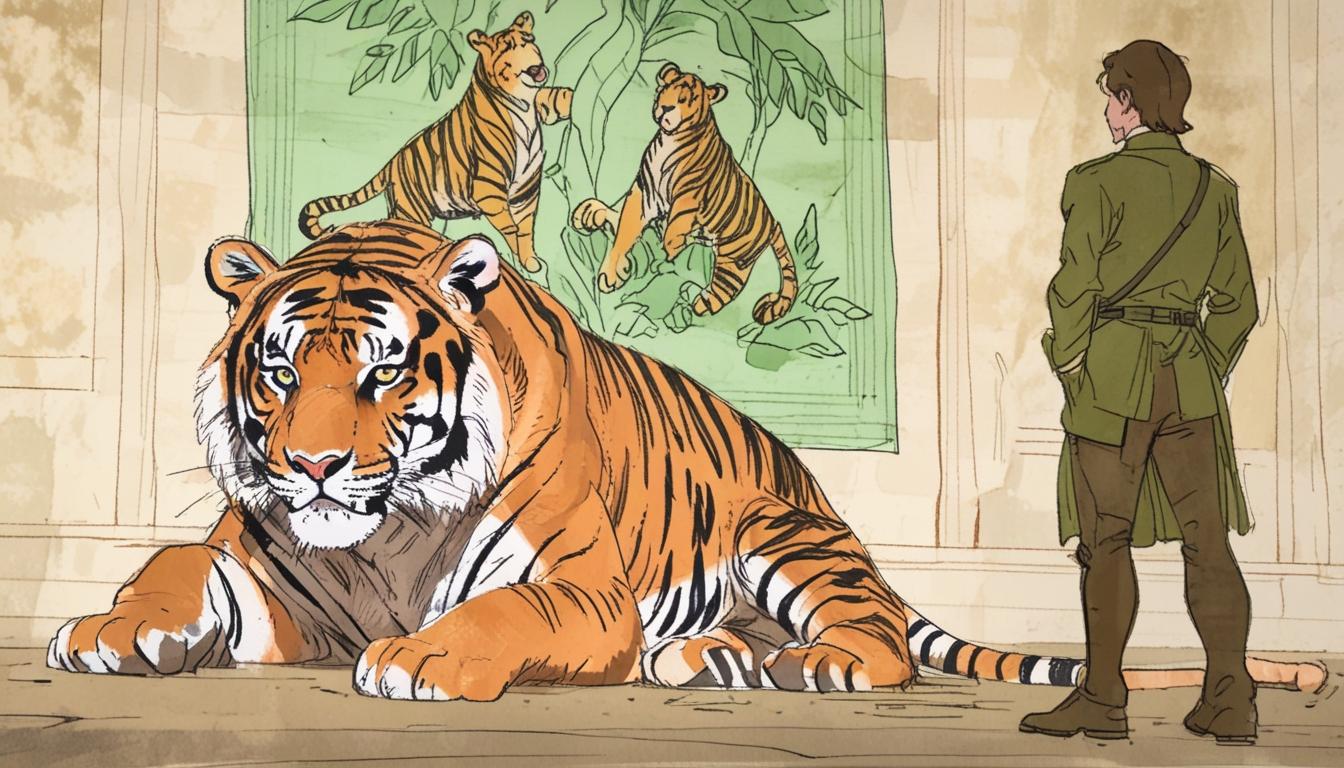Animal rights activists are intensifying their calls for the removal of a stuffed eight-foot Bengal tiger from Bristol Museum, a relic of big-game hunting that dates back over a century. This tiger, among the many creatures killed during King George V's notorious ten-day hunting expedition to Nepal in 1911, was part of a larger list of trophies that the King gleefully reported; he boasted of killing 21 tigers, eight rhinos, and a bear during the trip. The museum exhibit features the tiger crouching in front of a mural painted by wildlife artist Stanley Lloyd, which depicts George V in full safari regalia.
Campaigners from organisations such as People for the Ethical Treatment of Animals (PETA) argue it is time to confront this dark chapter in history. Elisa Allen of PETA stated that these specimens represent a “shameful past behaviour,” and advocates for the tiger to be returned to its homeland for a respectful burial. She suggests that if that is not feasible, at the very least, the museum should amend the accompanying display to reflect the violent realities of how these animals met their demise.
In addition to the tiger, Bristol Museum has exhibited exhibits of various endangered and extinct species. Highlighting the plight of these species, the museum draped its displays in black mourning veils in August 2019, following a UN report warning that a million species face extinction primarily due to human actions. This initiative was inspired by local schoolchildren, demonstrating a growing awareness and activism among younger generations concerning conservation and ethical treatment of animals.
The effects of trophy hunting, as highlighted by Dr Mark Jones from the Born Free Foundation, have been devastating for numerous species. This sentiment echoes growing global concerns about wildlife conservation, amplified by recent exhibitions aimed at raising awareness about the plight of big cats. The Born Free charity, for example, launched an exhibition featuring life-sized bronze sculptures of lions in Bristol to bring attention to the sharp decline in lion populations, which have plummeted from approximately 200,000 in the 1960s to around 20,000 today.
Such displays serve as grim reminders of the consequences of past practices. The historical context of trophy hunting, particularly during the colonial era, reveals a troubling relationship between power and wildlife. According to various historical records, over 80,000 tigers were killed in British India between 1875 and 1925, underscoring the need for continued dialogue about ethical treatment and conservation efforts today.
This growing awareness also intersects with a shift in public sentiment; taxidermy displays, once seen merely as curiosities, are now scrutinised for their ethical implications. Museums are beginning to recognise their role in shaping narratives around such specimens. Some exhibits have undergone symbolic transformations—coated in red paint or adorned with manacles—as a form of protest against their origins and treatment. These changes aim to foster a deeper understanding of and responsibility towards wildlife conservation.
In light of ongoing discussions regarding the moral implications of keeping trophies, Bristol Museum’s approach illustrates a broader trend in museum practices that prioritises ethical considerations alongside historical preservation. The fate of the Bengal tiger remains uncertain, but the chorus of voices demanding respect for both the creature and the narratives of suffering that surround it continues to grow louder. Conversations about our past are increasingly informing our approach to wildlife today, prompting a necessary reckoning with the legacies we choose to exhibit and commemorate.
Reference Map:
- Paragraph 1: [1]
- Paragraph 2: [2]
- Paragraph 3: [3]
- Paragraph 4: [7]
- Paragraph 5: [5]
- Paragraph 6: [6]
Source: Noah Wire Services
